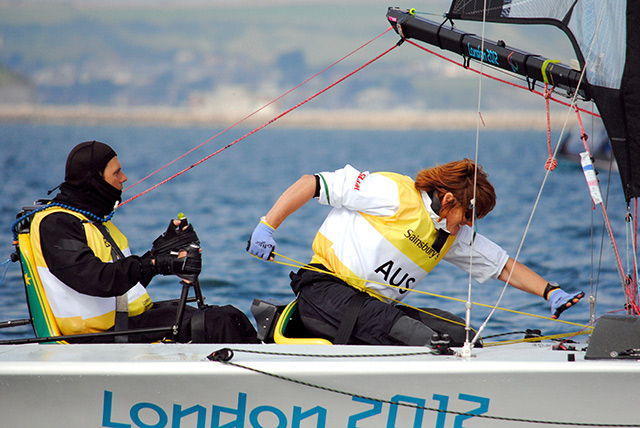Sailing was included in the 1996 Athens Paralympic Games as a demonstration sport, and then made its debut as a medal sport in the Sydney 2000 Paralympic Games. This is after the sport really took off in the 1980s and became increasingly popular. As a result, it is now practiced in more than 70 countries around the world. Athletes with any physical impairments can compete in paralympic sailing, and there are 4 different classes; stability, hand function, mobility and vision.
 sailing at the 2012 Paralympics
sailing at the 2012 Paralympics Initially only the 2.4mR and Sonar events were introduced at the Sydney games. At the 2008 Beijing Paralympics, SKUD 18, a new event, was included. The 2.4mR event must have one sailor, the Sonar event must have two sailors, and the SKUD 18 event must have three sailors. Also, in the SKUD 18 class, there must be at least one female sailor per boat. As for the other two events, there are no specific gender requirements.
Each event had up to 11 different races. Athletes earn a point for their position, e.g. 1 for first, 2 for second etc. After all the events, each teams score is added up (apart from their worst score), to give an overall. The gold medal goes to the sailor or team of sailors with the lowest overall points.
Even though sailing has been gaining in popularity, it seems that the IPC see no future for it in the Paralympic Games, at least not in Japan. They decided to exclude sailing from Tokyo 2021 and future Paralympic Games
Related Pages
- List of sports at the Paralympics
- Discontinued Paralympic Sports
- Demonstration Paralympic Sports
- Sailing at the Olympics
- List of Sports for Athletes with Disabilities
- More about the sport of sailing


 Upcoming Events
Upcoming Events